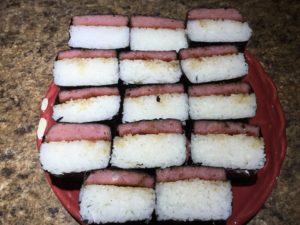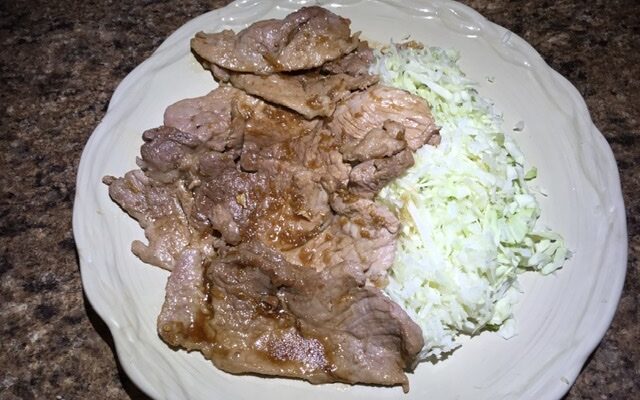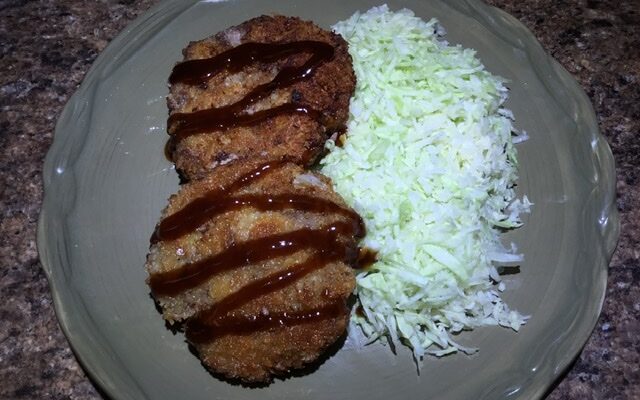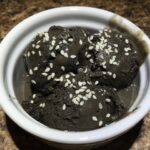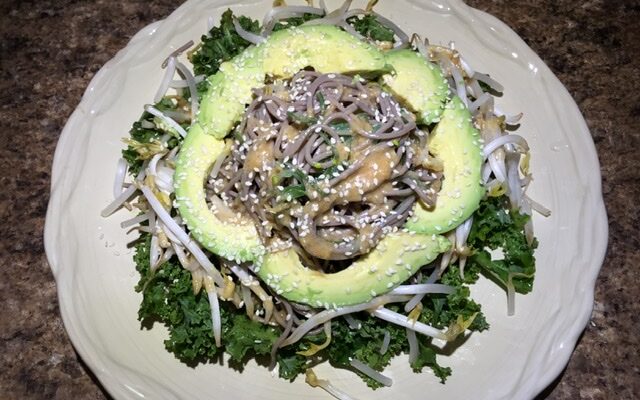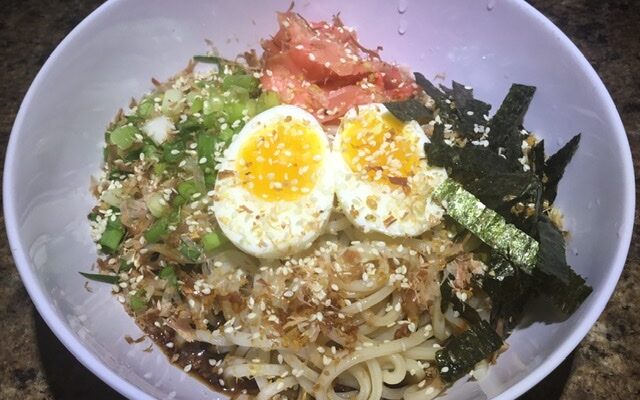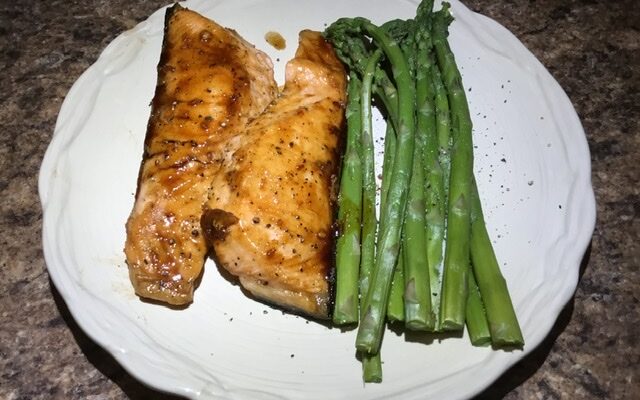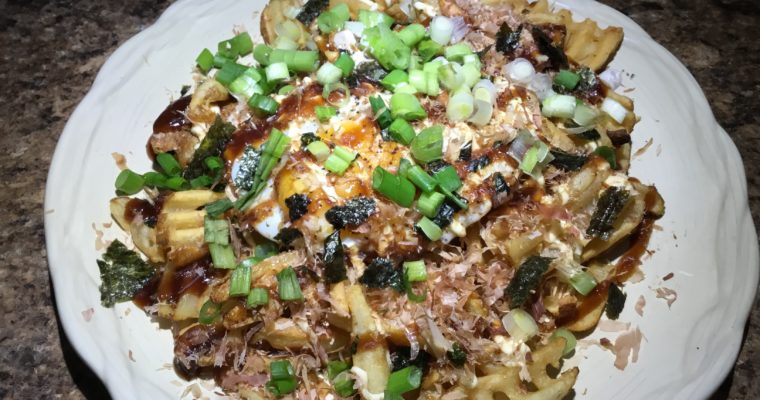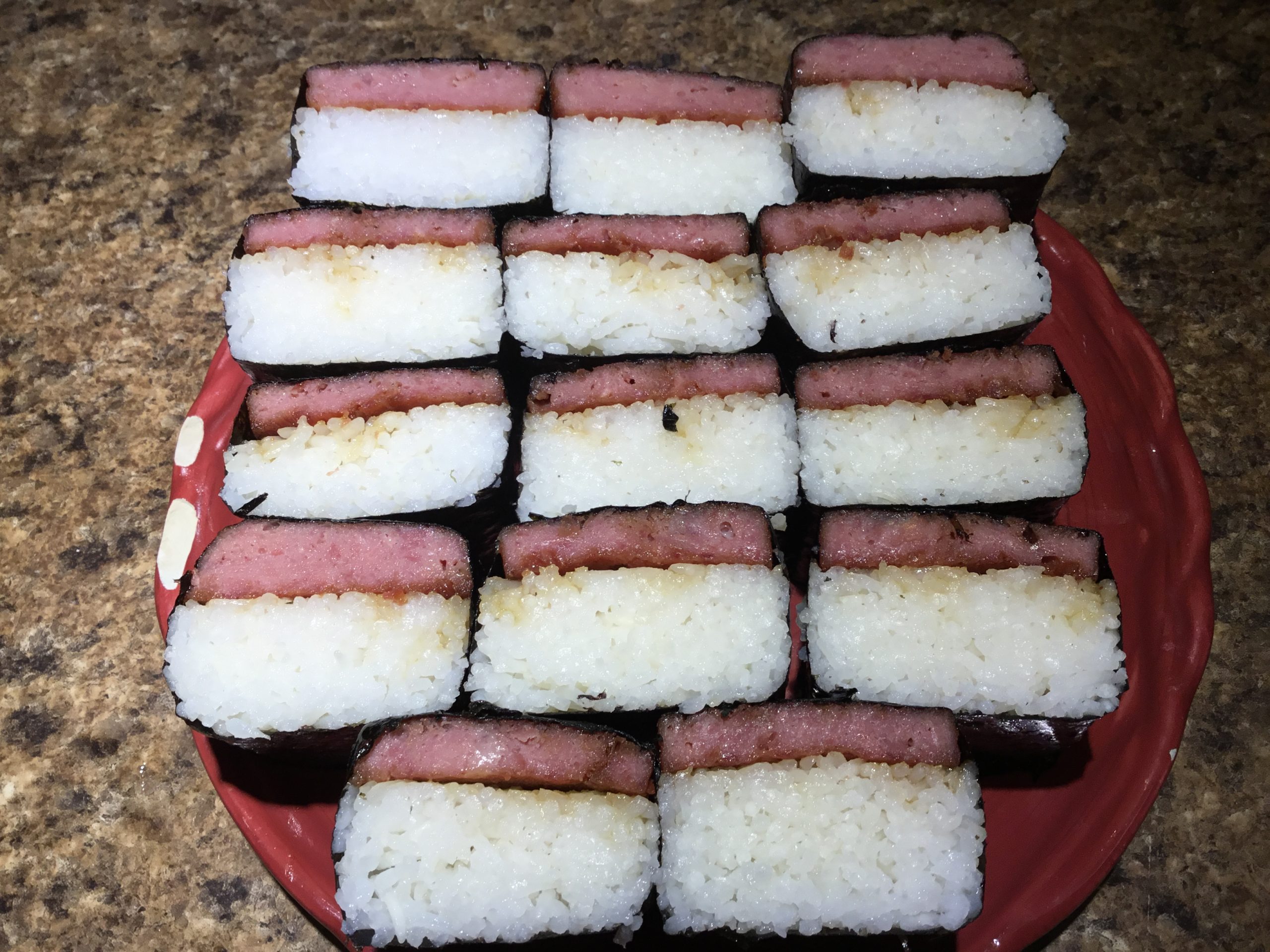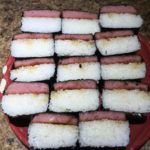Tag: Japanese
Black Sesame Ice Cream
Black Sesame Ice Cream
Black sesame ice cream is something special. I was first introduced to it through Japanese ice cream mochi that my past employer sold. It became my favorite mochi flavor. I wanted to learn how to make just the ice cream. So I did.The first time I made the ice cream was for an ice cream pie with an Oreo cookie crust with homemade whipped cream and a blackberry sauce. Must I say, one of the best desserts I’ve ever had. The ice cream is almost chocolatey; kind of reminiscent of peanut butter, and extremely rich. When making this ice cream, it is important to whisk together the egg yolks, sugar, and salt in a cold pot. Whisk in the cream and milk. Then turn on the heat to medium low. You will need to whisk the entire time of cooking to ensure that the yolks don’t curdle. After 10 minutes, turn off the heat and whisk in the black sesame paste. Make sure you use paste and not black tahini. Black tahini is raw sesame seeds and is bland. Black sesame paste is roasted black sesame seeds that’s ground into a paste. It is very strong in flavor and will give the ice cream a nutty taste. Chill the batter. Add it to you ice cream machine and churn for 25 minutes. Freeze gor 4 hours before serving.
Equipment
- ice cream machine
Ingredients
- 7 egg yolks
- 3/4 cup brown sugar
- 1 cup heavy cream
- 1 cup whole milk
- 1/4 tsp salt
- 3 tbsp cocoa powder optional
- 2/3 cup black sesame paste
- white sesame seeds optional garnish
Instructions
- Whisk together the egg yolks, brown sugar, salt, and optional cocoa in a pot. Pour in the milk and cream. Turn the burner to medium low and whisk continuously for 10 minutes.
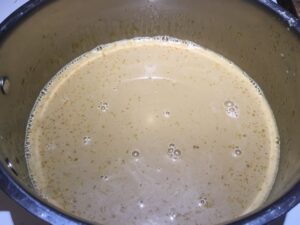
- Take off the heat and whisk in the black sesame paste.
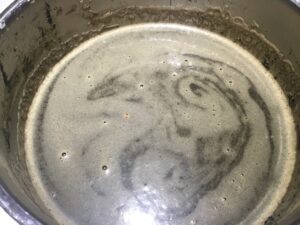
- Pour the ice cream batter in a bowl. Place that bowl in a larger bowl filled with ice to cool down the batter. This will take about 30 minutes.
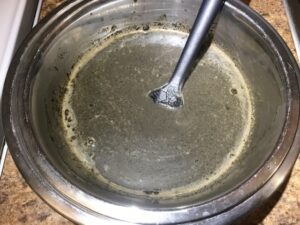
- Pour the batter into your ice cream machine and use as directed.
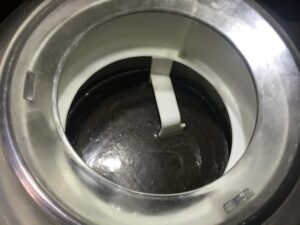
- Churn for 25 minutes. Scoop into a container and freeze for 4 hours before consumption.
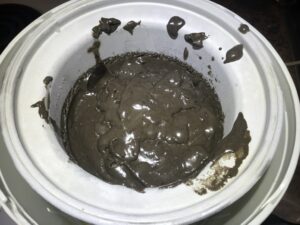
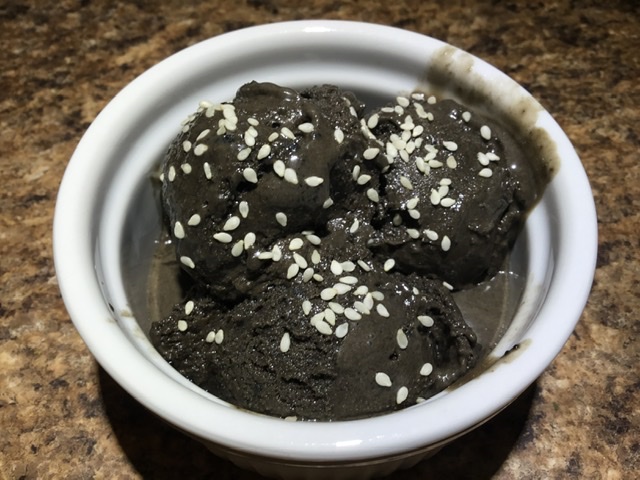
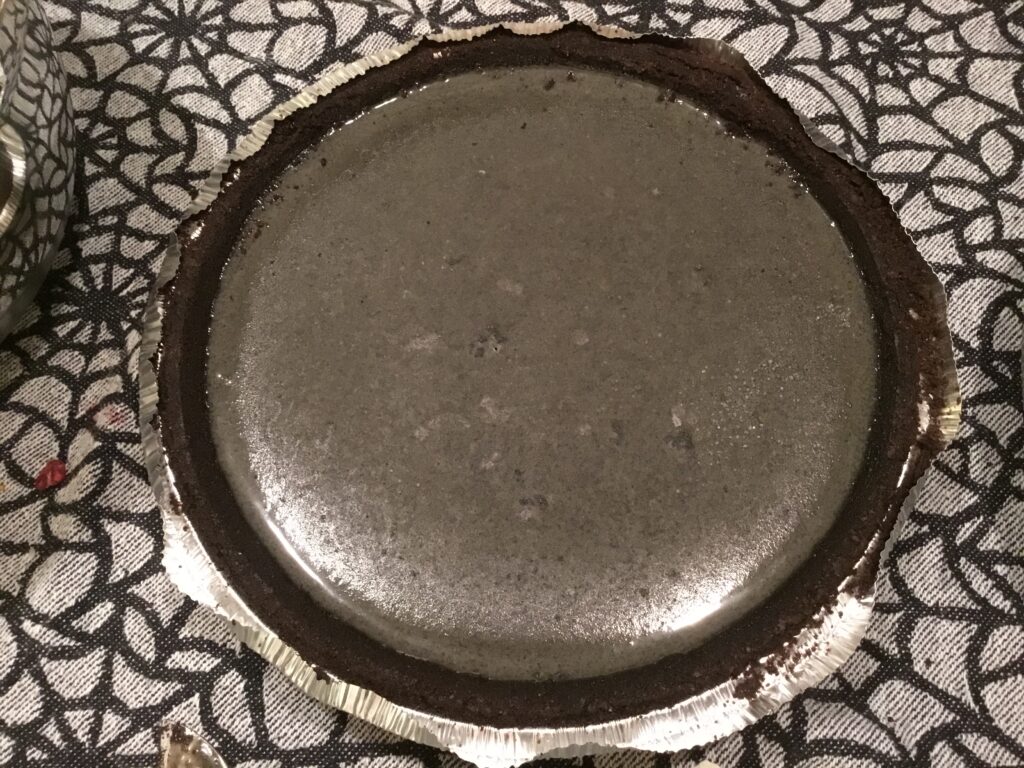
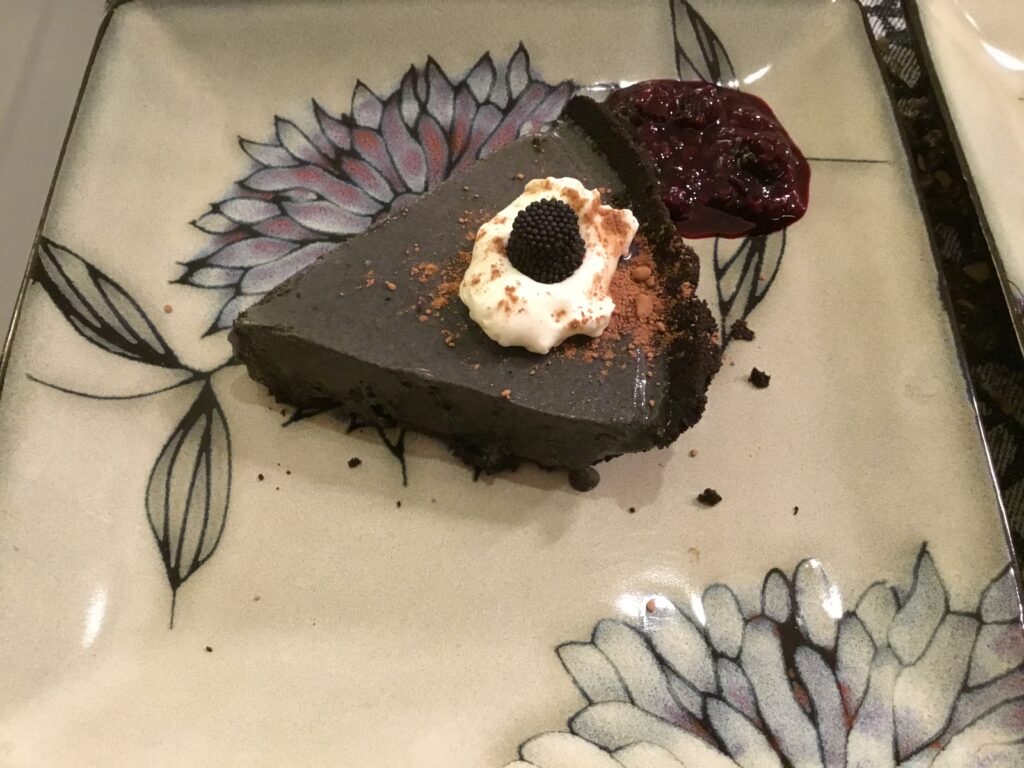
Teriyaki Salmon Onigirazu
Teriyaki Salmon Onigirazu
Onigirazu are like small sushi sandwiches. The rice is pressed tight in a musubi or onigirazu press. This layer is like the bread of a sandwich. Then they can be filled with a variety of fillings: tonkatsu, bulgogi, ham egg and cheese…The list goes on. Then another layer of rice is pressed over the top of the filling. It is all wrapped in a sheet of nori. This particular recipe uses leftover teriyaki salmon and steamed asparagus.
Servings: 4
Equipment
- musubi press
Ingredients
- 4 teriyaki salmon fillets
- 12 asparagus spears cut in half and steamed
- 1 1/2 cups sushi or jasmine rice steamed
- 4 nori sheets
Instructions
- Place the musubi press in the center of a sheet of nori.
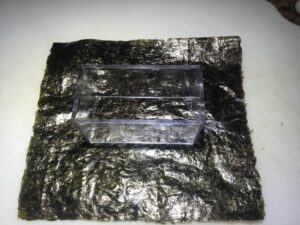
- Place 2-3 tbsp of the cooked rice in the press. Press it down.
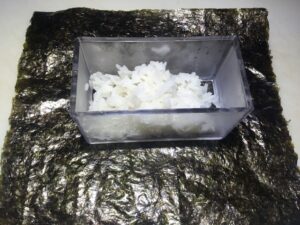
- Put a skinned piece of the teriyaki salmon on the rice.
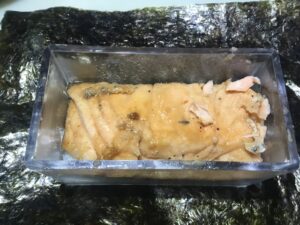
- Put 4-6 half pieces on top of the salmon.
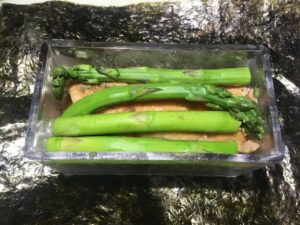
- Put 2-3 more tbsp of the rice on top of the asparagus. Press it tightly.
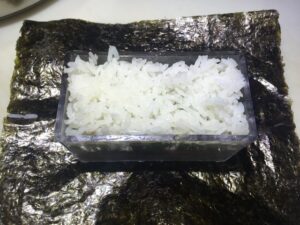
- Wrap up the onigirazu. Seal the edges with a little warm water.
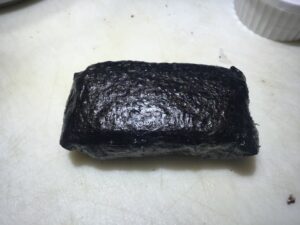
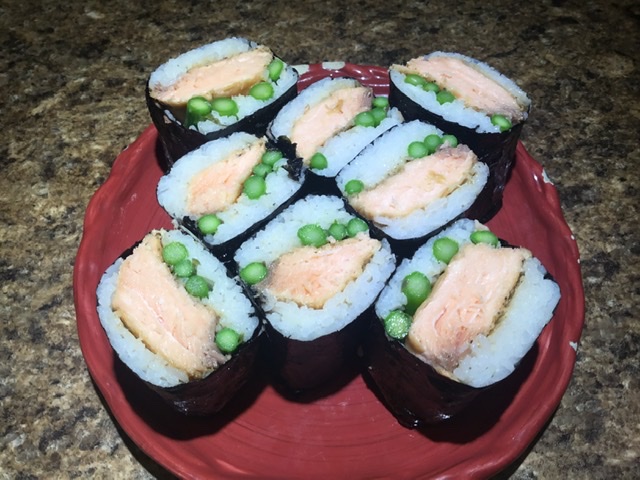
Teriyaki Salmon
When you go to an American grocery store, you will see countless varieties of pretty horrible tasting bottled teriyaki sauces on the shelves. Honestly, because of this, teriyaki has always been a huge turnoff for me. They all have too much salt and extra ingredients that you don’t need. Puke. In a Japanese grocery store, you won’t find any. Why? Because every household in Japan makes their own. The best part is, real Japanese teriyaki only has 4 ingredients: mirin, sake, soy sauce, and sugar. It’s simple with a proper balance of sweet and salty.Japanese-style teriyaki Salmon is so much more complex than putting a sauce on salmon. The Japanese fillet their salmon at a 30 degree angle 1/2”-1” thick with the skin on instead of cutting a straight on 90 degrees portion out of the fillet. Cutting the salmon this way will do several things. It gives the salmon a wider spread of the flesh, allowing it to absorb the teriyaki. That also means that the fillets won’t require marination. Since the fillets are thinner, the salmon fillets will cook a lot faster and more evenly. It is highly important to leave the skin on the salmon while cooking. I feel that I have to repeat this again because of all the recipes I see out there removing the skin before cooking salmon. IT IS HIGHLY IMPORTANT TO LEAVE THE SKIN ON THE SALMON WHILE COOKING. For several reasons…The skin holds the fillets together. If I were to remove the skin before cooking this salmon, you’d have flaked salmon in teriyaki sauce…Between the flesh and the skin is a nice layer of fat where you get your omega 3 fatty acids. You are throwing away essential nutrients by removing the skin…It also keeps your salmon moist…Nobody said you have to eat the skin. LEAVE IT ON! I bet the same people that remove the salmon skin eat boneless skinless chicken breasts with their snotty children, Cooper and Emily.End of angry rant.
Ingredients
- 1 lb salmon fillet head end of fillet
- 1/2 tsp salt
- cracked black pepper
- 3 tbsp flour
- 2 tbsp butter
- 1 tbsp sake or rice wine
Teriyaki Sauce
- 2 tbsp soy sauce
- 1 tbsp mirin
- 1 tbsp sake
- 1 tbsp sugar
Instructions
How to fillet salmon Japanese-style
- Instead of straight on cutting smaller portioned fillets out of the whole one, the Japanese will cut the fillets 1” thick at a 30 degree angle.
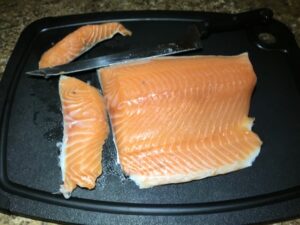
- Thinly cutting the salmon this way gives a wider spread of the flesh, allowing to absorb more of the teriyaki.
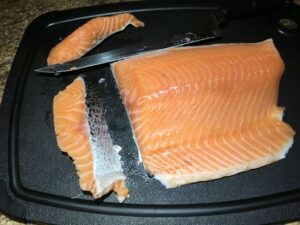
- Cut the entire fillet.
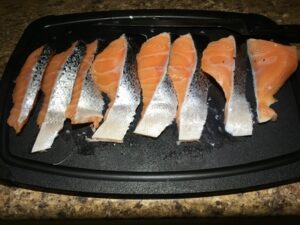
Teriyaki Salmon
- Season each fillet with salt and pepper. Dust the fillets in flour. Shake off any excess.
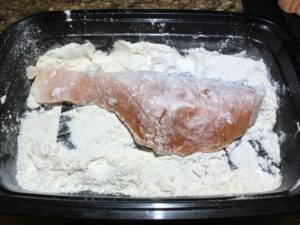
- Melt the butter in a sauté pan over medium heat. Add in the salmon fillets skin side down. Sear for 3 minutes.
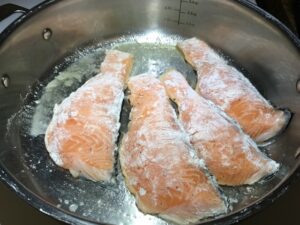
- Flip over. Add the saki and cover, cooking for another 3 minutes. Remove from the pan.
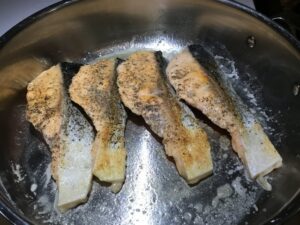
- Mix together all of the teriyaki ingredients.
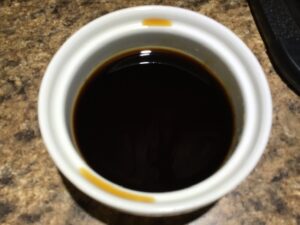
- Pour in the pan.
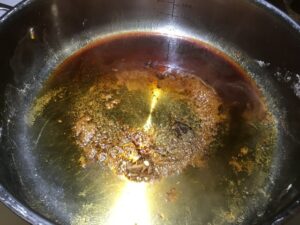
- Once it starts to boil, add the salmon fillets back in.
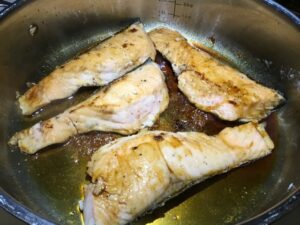
- Toss and coat each side in the teriyaki sauce.
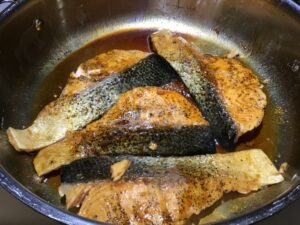
Spam Musubi
Spam Musubi
Hawaiian’s love Spam. Spam found it’s way to Hawaii after WW2. All Spam really is is ground pork shoulder with hotdog seasoning. This recipe has it’s roots in Japan, where sushi rice is rolled into balls and wrapped in nori; called omusubi. It is said that Japanese soldiers in interment camps created the recipe. Today, you can find musubi everywhere in Hawaii; even at gas stations in plastic containers ready to eat.There are many different variations of Spam musubi. Some have the Spam slices cooked in the soy/sugar sauce, almost making the slices candied. Others will have the sauce brushed on the rice block, then placing the Spam on top. Some recipes will have the Spam rice block wrapped in only an inch of the nori. This particular recipe has the block completely covered in the nori. If you don’t have a musubi press, cut the top and bottoms out of the Spam can and use that as your mold for the rice.
Ingredients
- 2 cups steamed rice steamed with 6 tbsp rice vinegar
- 1 can Spam sliced into 6-8 slices
- 1 tbsp vegetable oil
- 1/4 cup soy sauce
- 1/2 cup sugar
- 3-4 sheets nori
Instructions
- Mix together the soy sauce and sugar. Set aside.
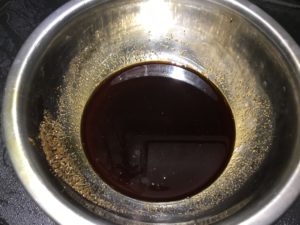
- Slice the Spam into either 6 or 8 slices.
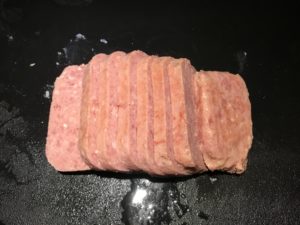
- Heat up the cooking oil on a griddle over medium high heat. Add the spam slices. Cook for 3 minutes a side.
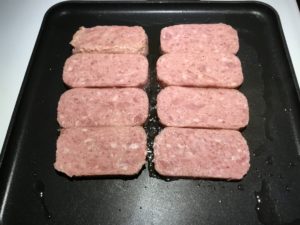
- Pour in the soy/sugar sauce. Cook the spam slices for another 2 minutes a side, making sure the spam is coated in the sauce. Remove from the pan.
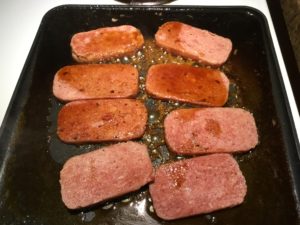
- Portion out the rice into 6 or 8 portions, depending on how many spam slices you have. Using a musubi press, press down one portion of the rice.

- The rice block should be firm and hold shape. This will only work if the rice is freshly steamed.
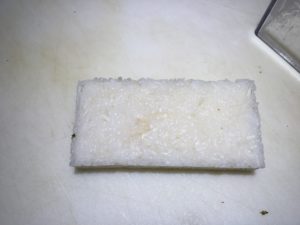
- Add a slice of the spam on top of a rice block.

- Slice a sheet of nori in half.
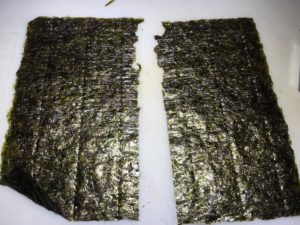
- Put a slab of rice/spam on the center of the sheet. Fold up each side up, sealing with water.
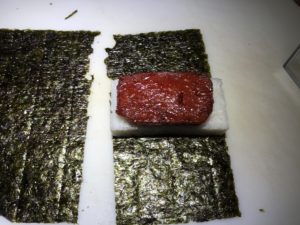
- Keep them whole if eating as a main course or slice in half if eating as an appetizer.
